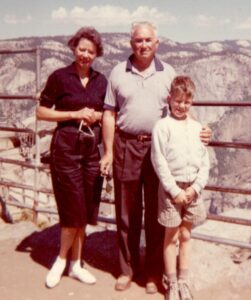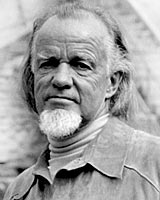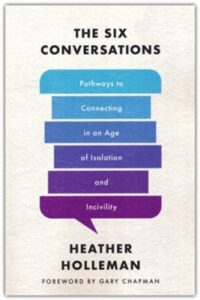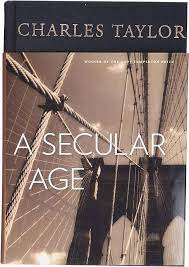“Your dad and I have divided family responsibilities 50-50,” Mom would tell us kids. “I make all the small decisions, and he makes all the big decisions. I decide what jobs to take, what cities to live in, what houses to buy. He decides who gets to be president and whether or not we go to war.”
No, Mom was not subtly suggesting that she had my dad under her thumb. Dad was no dishrag. My young backside gave proof of that! Instead, Mom and Dad made decisions together.
Even in the 1950s, I was growing up in a household that modeled partnership and mutual respect in a marriage. Yes, they were traditional in that my mom didn’t work outside the home, but she was a strong, mature, wise, loving person who my dad respected and listened to.
 But there’s something else you should know about my dad. He was a confirmed bachelor for forty-six years. He had decided he would not get married because he had never seen a happily married couple. And as he told us, the reason for the unhappiness was always money.
But there’s something else you should know about my dad. He was a confirmed bachelor for forty-six years. He had decided he would not get married because he had never seen a happily married couple. And as he told us, the reason for the unhappiness was always money.
So when my mom won him over and they got married, he decided to never let money be an issue between them. That meant two things for him. First, he would always try to make enough money so that it didn’t have to be a problem. But second, he was never going to argue about money with mom regardless of how much money they did or didn’t have.
How did this work out in practice? I will give you one example. Once my mom and dad were at a store and my mom showed him two purses she liked. Since she couldn’t decide between them, she asked dad which one she should buy. Of course one was more expensive than the other.
Without hesitation, my dad said, “Buy both.”
 Extravagance wasn’t the lesson I got from this episode or from watching my parents for decades. After all, they had both lived through the Depression, and frugality was baked into my DNA.
Extravagance wasn’t the lesson I got from this episode or from watching my parents for decades. After all, they had both lived through the Depression, and frugality was baked into my DNA.
No, what I learned was how a husband and wife can function together, how they can make decisions together, and how right and good it can be for a husband and wife to defer to each other.
Within some Christian circles today, this is not always the way things are viewed. But even though my father was not a religious person, as I looked more closely at Scripture in the years ahead, I found out how close both of them were to a truly biblical perspective.
What is that perspective? Stay tuned. I’ll take that up at my next installment in this new series of posts.
—
Image by Mohammed Ryad Hossain Salman from Pixabay

 I also wrote on how Schaeffer spoke prophetically about one of the most pressing needs that the church has today—showing love to each other. If you’d like to see it, just
I also wrote on how Schaeffer spoke prophetically about one of the most pressing needs that the church has today—showing love to each other. If you’d like to see it, just  Social
Social To keep great conversations and relationships growing, it’s key to be nonjudgmental, to ask follow-up questions, and not be too quick to give our perspective.
To keep great conversations and relationships growing, it’s key to be nonjudgmental, to ask follow-up questions, and not be too quick to give our perspective.
 ♦ Reengage with lifelong friends. Admittedly it can be hard to make new friends. An easier but still very fruitful path might be to renew connections with old friends near and far. In recent years I’ve deliberately increased the emails to, calls and zooms with, and visits to several longstanding friends. Some I’ve had spotty contact with over the years, and some I hadn’t seen in decades. But I’ve so enjoyed the results of more regular connection with all of them.
♦ Reengage with lifelong friends. Admittedly it can be hard to make new friends. An easier but still very fruitful path might be to renew connections with old friends near and far. In recent years I’ve deliberately increased the emails to, calls and zooms with, and visits to several longstanding friends. Some I’ve had spotty contact with over the years, and some I hadn’t seen in decades. But I’ve so enjoyed the results of more regular connection with all of them.  In his book
In his book  Grant believes that we will be better off if we think more like scientists (but he’s willing to reconsider!). They actually get excited when they find out they are wrong because this means they may have discovered something new. By realizing they were wrong, scientists in the 20th century alone have discovered vitamins, cosmic rays, insulin, atomic nuclei, the polio vaccine, quasars, and much more.*
Grant believes that we will be better off if we think more like scientists (but he’s willing to reconsider!). They actually get excited when they find out they are wrong because this means they may have discovered something new. By realizing they were wrong, scientists in the 20th century alone have discovered vitamins, cosmic rays, insulin, atomic nuclei, the polio vaccine, quasars, and much more.* The most effective negotiators and debaters, as described by Adam Grant in
The most effective negotiators and debaters, as described by Adam Grant in 
 Wilson closes with three Christian themes from the 1770s to help navigate the weird world that decade has bestowed on us.
Wilson closes with three Christian themes from the 1770s to help navigate the weird world that decade has bestowed on us. My grandson was reading
My grandson was reading  Finally, I pay attention to books that are referenced in more than one book I’ve read. The one that has risen to the top in recent years is A Secular Age by Charles Taylor. The book came out in 2007, and I have read a half dozen different books which make major use of Taylor’s framework and ideas. I confess that I have delayed diving into it because it is almost 900 pages and probably not the easiest read. But I think the time has come.
Finally, I pay attention to books that are referenced in more than one book I’ve read. The one that has risen to the top in recent years is A Secular Age by Charles Taylor. The book came out in 2007, and I have read a half dozen different books which make major use of Taylor’s framework and ideas. I confess that I have delayed diving into it because it is almost 900 pages and probably not the easiest read. But I think the time has come.